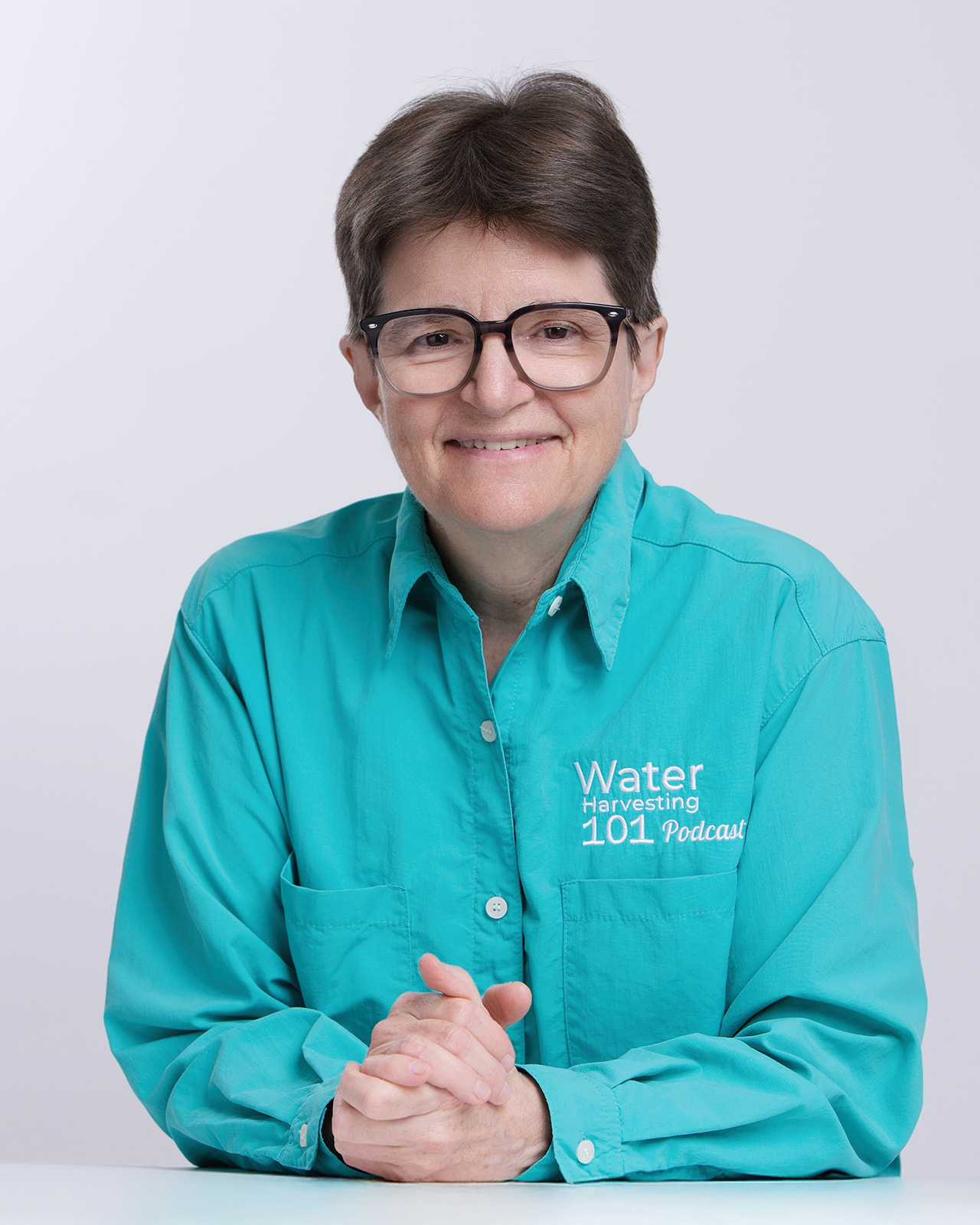
Living In Drought Conditions?
You’re Not Alone.
Water Harvesting Offers Relief – Right Now
The Problem:
The U.S. Drought Monitor notes, “As of November 25, 2025, 36.09% of the U.S. and Puerto Rico and 43.06% of the lower 48 states are in drought.”
The Solution:
Passive and active water harvesting techniques that you can learn and quickly put to work to maximize this precious resource.
In Tucson, Arizona — a city that averages just 12 inches of rainfall per year — drought isn’t an occasional challenge. It’s a way of life. If you’re reading this, you can no doubt relate.
Yet even in this arid environment, I have transformed my home into a…
…thriving, water-efficient oasis.
When I bought my home in 2004, the yard was barren — crushed rock in the front and invasive Bermuda grass in the back. Two decades later, my property showcases lush, sustainable landscaping — all without relying on irrigation.
My secret? A combination of passive and active water harvesting techniques that are easy to learn — and put to work.
So, what is water harvesting?
Simply put, water harvesting consists of these three activities:
- Redirecting rainwater away from where it isn’t wanted to where it is.
- Storing rainwater for later use, for example, during a drought.
- Recycling “used” water. At my place, I don’t let laundry water go down the drain. Instead, it’s for the fruit trees.
Want to See Water Harvesting in Action?
Enter your name and email address to get a FREE sample chapter of Water Harvesting 101. And get even more water harvesting tips in my monthly newsletter.
NOTE: Your information will not be sold or traded to anyone. I hate spam as much as you do.
"*" indicates required fields
Water Harvesting 101 introduces you to:
Passive Water Harvesting: This is the act of sculpting your land with basins, berms, and drainage swales.
The goal? To channel rainwater toward plants and away from structures — like your house.
Passive water-harvesting earthworks eliminate the need for landscape irrigation connected to municipal water systems. In arid regions, that spells substantial cost savings.
Active Water Harvesting: Want fresh garden produce when it’s 105 degrees out? And it hasn’t rained in six weeks? At my place, the 1,500-gallon rainwater harvesting cistern makes year ‘round gardening possible.
And, on wash day, I don’t let the wastewater go down the drain. Instead, I use a greywater harvesting system that effortlessly diverts that wastewater from the laundry to my fruit trees – two pomegranates, a fig, and a Meyer lemon.
Listen and Learn about Water Harvesting
Do you learn more easily by listening? The Water Harvesting 101 audiobook is the perfect companion for your walks, workouts, trips, and other “in-motion” activities.
Here’s a sample of what you’ll get:
The Water Harvesting 101 audiobook is just $7.95!
Because a Picture is Worth 1,000 Words…
When the audiobook serves up a water harvesting concept you want to picture, the Water Harvesting 101 eBook delivers.
I’m an award-winning documentary photographer, and I’ve included more than 40 of my high-resolution images in the Water Harvesting 101 eBook.
You’ll see active and passive water harvesting in action, learn the step-by-step instructions on building and maintaining your water harvesting systems, and get inspired through closeups of the wide variety of plants you can grow in an arid climate.
The Water Harvesting 101 eBook is a PDF that can be viewed on all devices. I designed it in the landscape format so that you can easily view it on your phone, tablet, or laptop.
Here’s a preview:
The Water Harvesting 101 eBook is just $29.95!
Testimonials and Media Mentions
Incredible! Excited to dig into this!
Eli Nielsen, Co-owner, The Rain Store, and Owner, EcoSense Sustainable Landscapes
Well structured, easy to understand, and includes your expert photographs to help the reader. And your narrator did a great job.
Gregory Sweet, Actor, Model, and Radio DJ
Reading Water Harvesting 101 is like strolling alongside author Martha Retallick on her property and taking a substantial but easy-to-understand university course on a critical, contemporary issue. It casts a focus not only on water conservation itself, but on the various settings where such tasks take place. Retallick is skilled at making the reader feel both admired and respected. And her superb photography lends additional credence to this valuable, strategic book.
Judy Vorfeld
Quite simply: there’s nothing quite like Water Harvesting 101 on the market. It’s time to grow the garden not from the roots up, but from the water system downward.
Diane Donovan, Senior Reviewer, Midwest Book Review, and Editor, Donovan’s Literary Services
Want to learn how to conserve scarce water – and put it to work?
Enter your name and email address to get a FREE sample chapter of Water Harvesting 101. And get even more water harvesting tips in my monthly newsletter.
NOTE: Your information will not be sold or traded to anyone. I hate spam as much as you do.
"*" indicates required fields
Another Learning Opportunity!
In addition to offering the Water Harvesting 101 eBook and audiobook package, Martha Retallick hosts a weekly podcast, also called “Water Harvesting 101.”
Subscribe now!
It’s FREE on Apple Podcasts, iHeart, and Spotify!
Meet Your Author and Podcaster

Although Martha Retallick writes from the perspective of an Arizona desert dweller, where droughts are a way of life, she was born and raised in Pennsylvania. Half of her childhood was spent in a house in the woods. That led to one of her first decisions as a first-time homeowner in Tucson. She didn’t want the stereotypical desert landscape that emphasizes gravel, rocks, and cactus. Instead, she wanted trees – yes, plural.
However, her slender budget couldn’t support an irrigation system. So, she planted trees, shrubs, and, yes, some cactus. The goal? A landscape that can live off infrequent rainfall, and, for more than 20 years, it’s done just that.